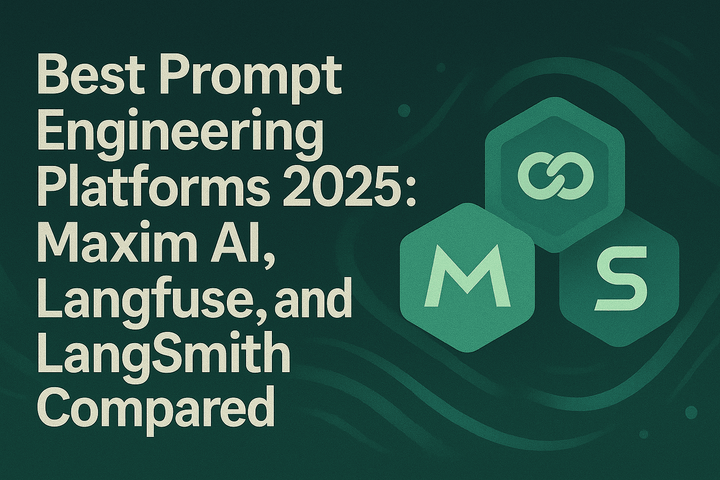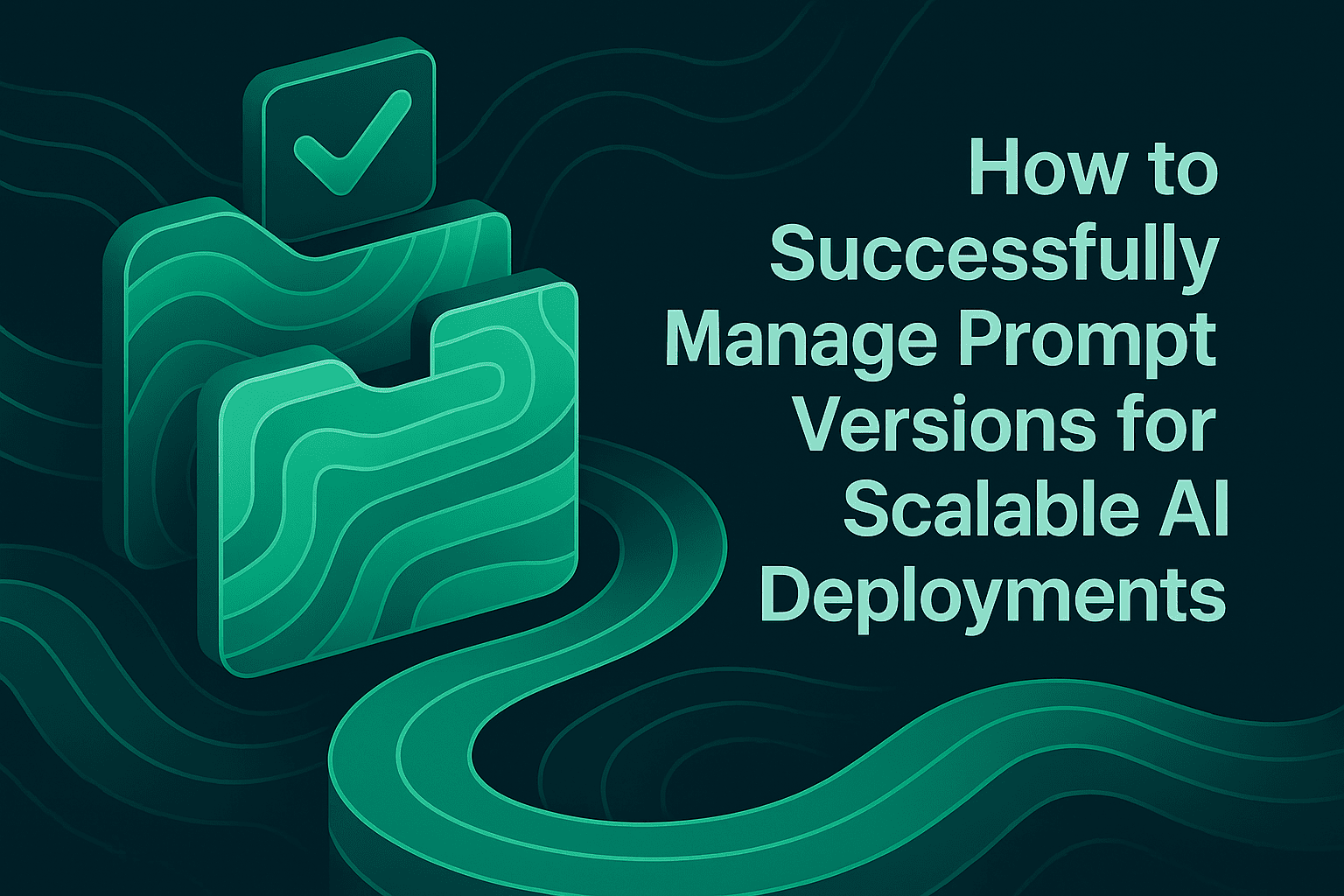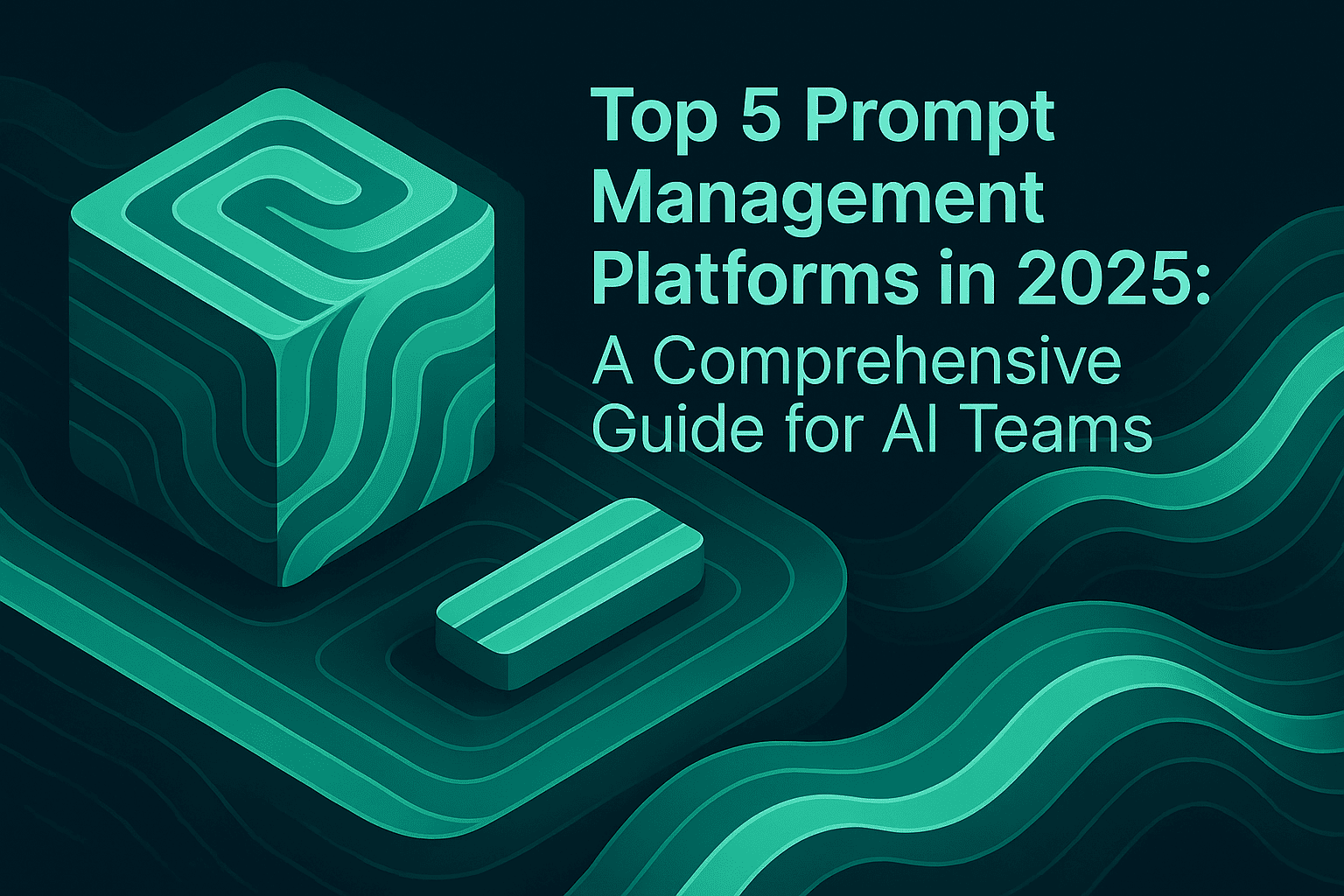5 Best Tools for Prompt Versioning

TL;DR
Prompt versioning helps teams manage, version and track changes of their prompts across environments. This blog explains how to implement prompt versioning in practice and compares five tools- Maxim, PromptLayer, Helicone, LangSmith, and Portkey, against criteria like version control, labels, eval integrations, analytics, collaboration, and production governance.
Introduction: Why Prompt Versioning Matters
Prompt versioning tracks changes to prompt templates across environments and teams so you can iterate safely, measure impact, and deploy with confidence. It enables:
- Version control and audit trails for each iteration.
- Collaboration between engineering and product teams.
- A/B testing and controlled rollouts using labels or rules.
- Evaluation at scale across datasets and metrics.
- Deployment gating and environment separation (dev/staging/prod).
- Monitoring and cost tracking to maintain ai reliability and reduce regressions.
Below are five best platforms shortlisted for robust prompt versioning: Maxim, PromptLayer, Helicone, LangSmith, and Portkey.
1) Maxim AI
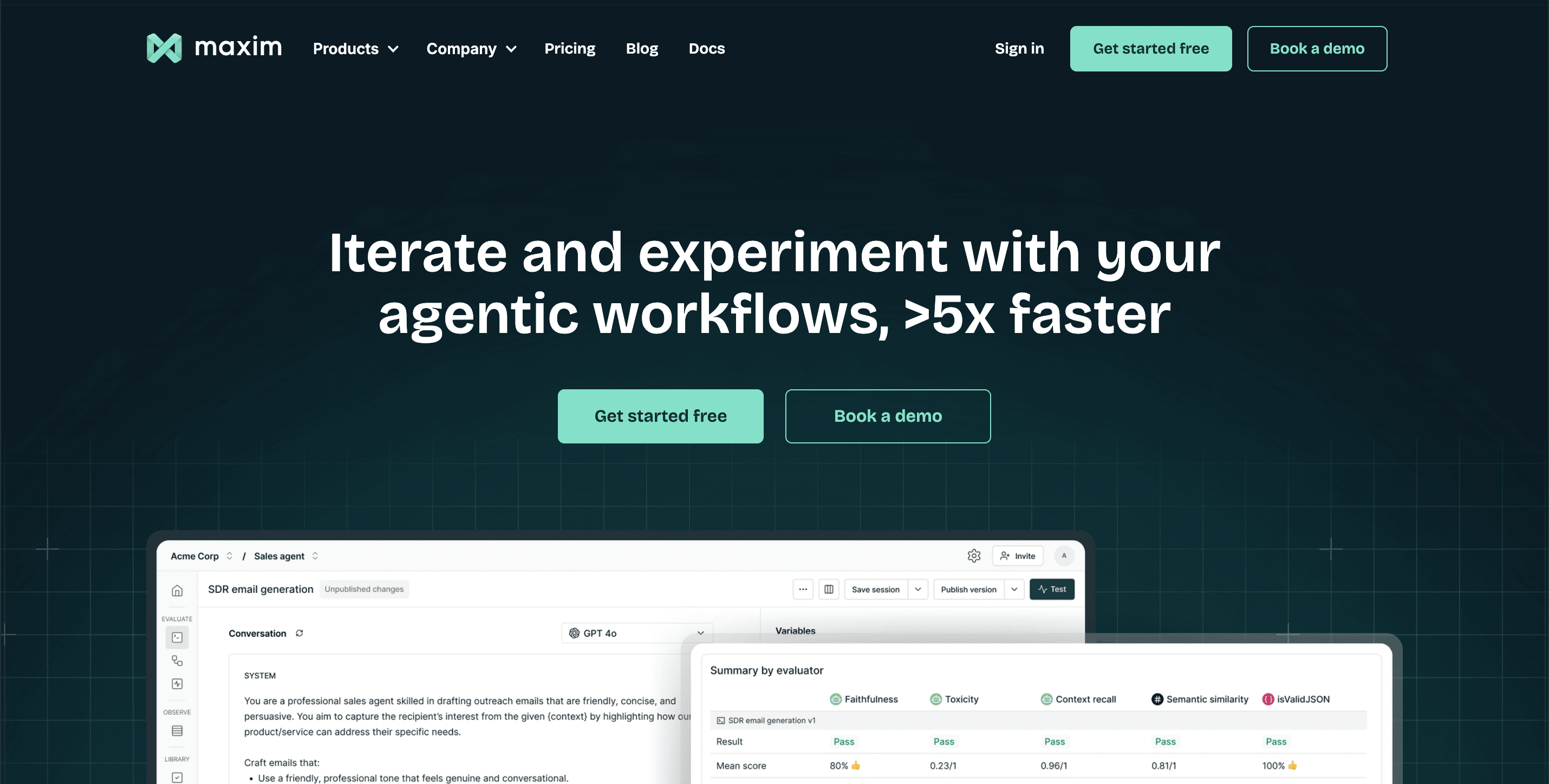
Platform overview
Maxim is an end‑to‑end platform for prompt engineering, simulation, evaluation, and ai observability. It’s designed for AI engineers and product teams to iterate >5x faster while maintaining quality. Maxim’s Prompt IDE enables rapid iteration across closed, open-source, and custom models. Users can version prompts, manage experiments, and deploy workflows without code changes, streamlining the entire lifecycle from ideation to production. It suits teams that want a CMS‑style approach with strong logging and search.
See the Platform Overview for a lifecycle summary:
Key Features:
- Prompt IDE and versioning: Maxim helps you to build in the Prompt Playground to iterate across various models, variables, tools, and multimodal inputs. Maxim helps you to compare different versions side by side to identify which version is better. (Prompt Playground, Prompt Versions, Prompt Sessions, Folders and Tags.)
- Intuitive UI for Prompt Management : User friendly interface to write, organize, and improve prompts.
- Integrated Evaluation Engine: Maxim helps you to test prompts on large-scale test suites using prebuilt or custom evals , like faithfulness, bias, toxicity, context relevance, coherence, latency etc.
- Tool call accuracy: Maxim helps in ensuring your prompt selects the accurate tool call Prompt Tool Calls. Maxim’s playground allows you to attach your tools (API, code or schema) and measure tool call accuracy for agentic systems.
- Human-in-the-Loop Feedback: Incorporate human raters for nuanced assessments and last-mile quality checks (article).
- Collaboration: Maxim allows you to organize prompts with folders, tags, and modification history, enabling real-time collaboration and auditability.
- CI/CD automation: Maxim automates your prompt evaluations by integrating them into your CI/CD pipeline. Prompt CI/CD Integration
- Prompt deployments and management: Deploy the final version directly from UI, no code changes required. Use Maxim’s RBAC support to limit deployment permission to key stakeholders.
- Observability and alerts: Maxim’s Tracing Overview and Set Up Alerts and Notifications for latency, tokens, costs, and evaluator violations.
- Enterprise-Ready Security: In-VPC deployment, SOC 2 Type 2 compliance, custom SSO, and granular role-based access controls (docs).
Pros
- Comprehensive lifecycle coverage experimentation, evals, simulation, and ai observability in one system.
- Strong evaluator ecosystem (bias, toxicity, clarity, faithfulness), plus human ratings.
- RAG‑specific context evaluation with precision/recall/relevance.
- CI/CD native support; prompt decoupling from code with prompt management and QueryBuilder rules for environment/tag/folder matching.
- Enterprise features: RBAC, SOC 2 Type 2, in‑VPC deployment, SSO, vault, custom pricing.
- Bifrost gateway (Maxim’s LLM gateway) for multi‑provider routing, automatic failover, load balancing, semantic caching, and governance; see docs for Unified Interface and Governance features:
Cons
- Full‑stack scope can be more than needed for very lightweight use cases.
- Requires initial setup of workspaces, datasets, evaluators, and deployment variables to realize full value.
2) PromptLayer
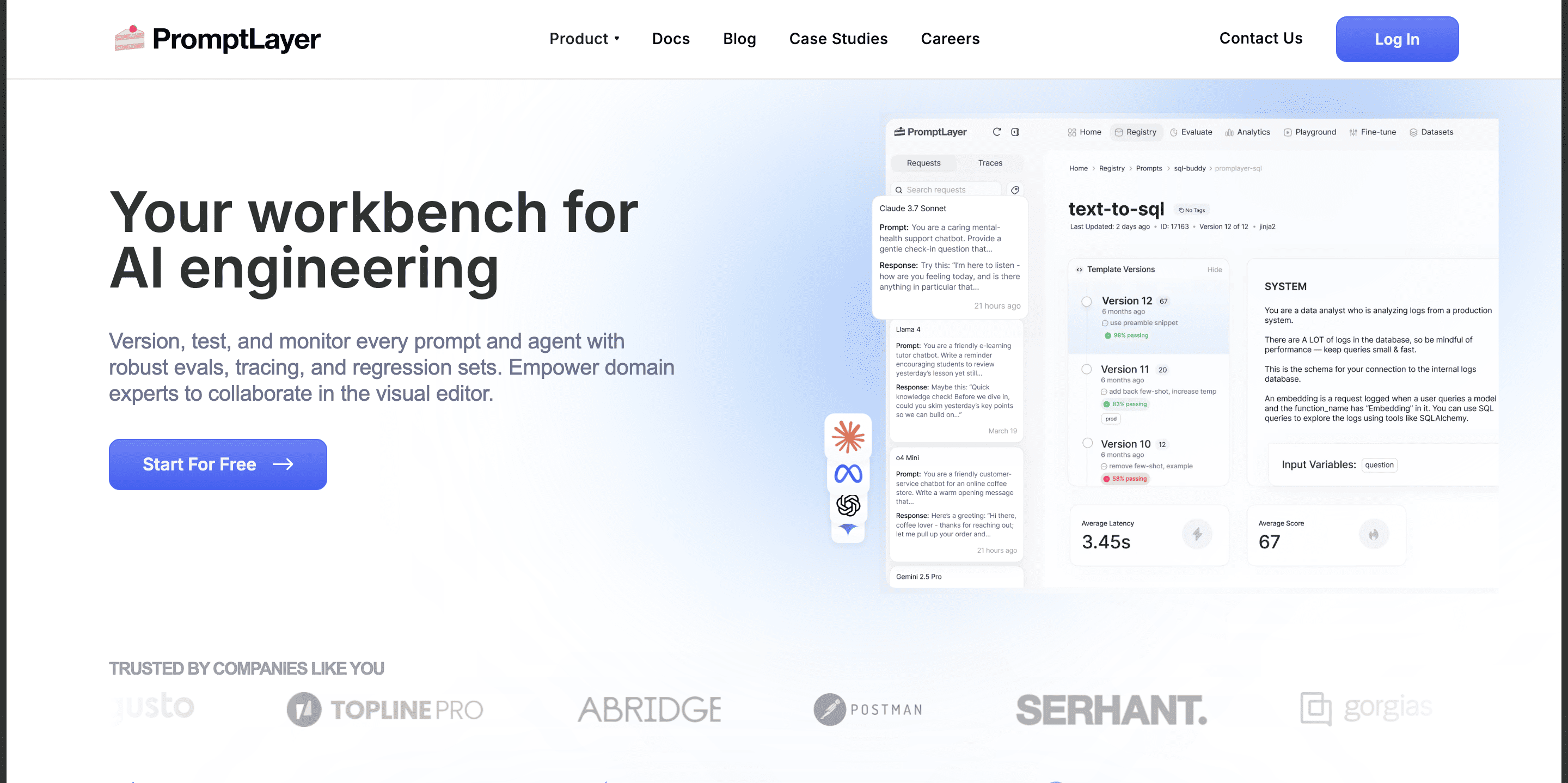
Platform overview
PromptLayer focuses on prompt management and versioning with a registry, labels, analytics, A/B testing, and eval pipelines.
Key Features:
- Prompt registry, versioning, and release labels: Promptlayer help you decouple prompts from code
- Evaluations and pipelines: Promptlayer helps you iterate, build, and run batch evaluations on top of your prompt, and Continuous Integration.
- Advanced search and analytics: PromptLayer allows you to find exactly what you want using tags, search queries, metadata, favorites, and score filtering.
- Usage Monitoring: Monitor user metrics, evaluate latency behavior, and administer run-time logs.
- Scoring and ranking prompts with synthetic evaluation and user feedback signals: supports A/B testing and scoring on the basis of evaluation results.
Pros
- Clean prompt management with decoupling from code and release label workflows.
- Visual evaluation pipelines; supports backtesting with production logs and regression testing.
Cons
- Less emphasis on integrated production observability compared to platforms with native distributed tracing.
- so deep tool orchestration may require external integrations.
- Niche Specialization: This needs to be paired with other solutions to gain full visibility into your applications, to run evals and so implement observability
3) Helicone
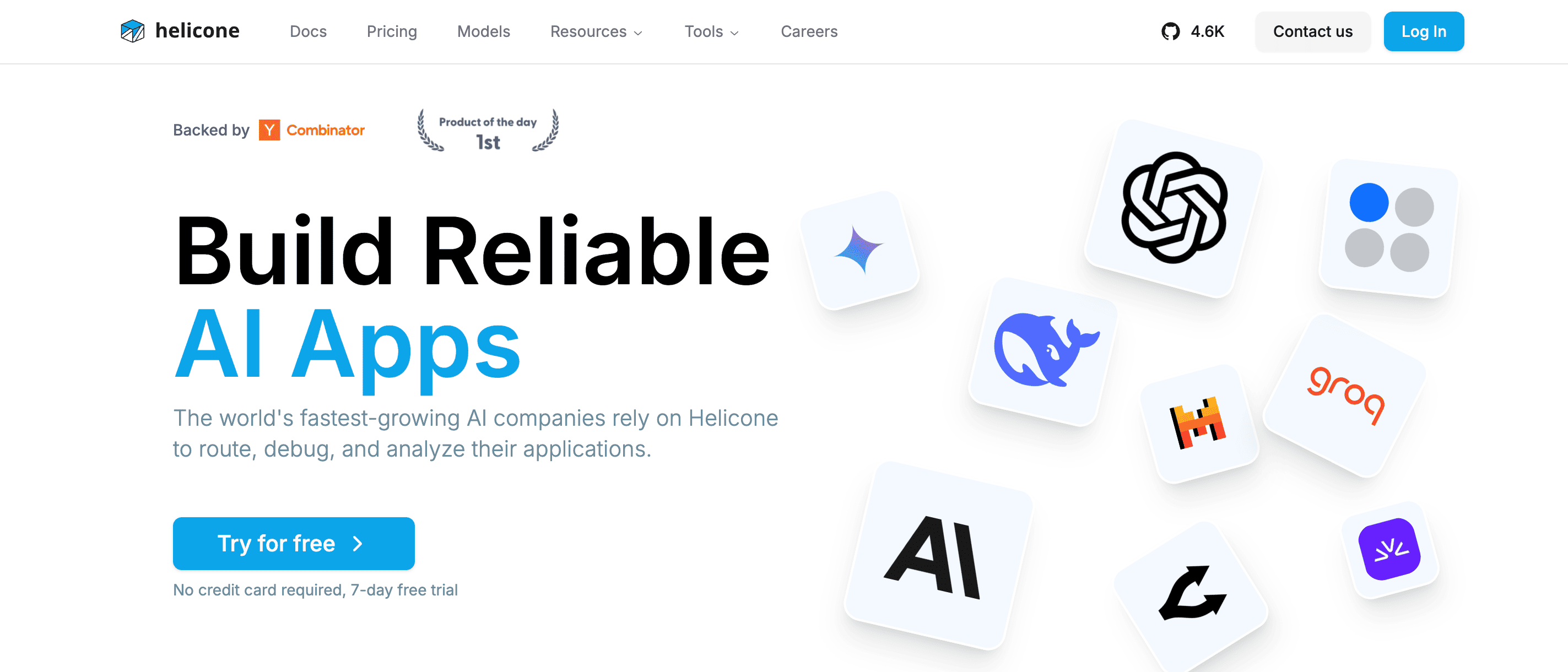
Platform overview
Helicone is an OSS‑friendly observability platform with an OpenAI‑compatible AI Gateway and prompt management. It centralizes logs, analytics, and evaluation score reporting, making it a good choice for teams invested in open tooling.
Key Features:
- Prompt Versioning: Automatically versioning of prompts when changes are made.
- Experimentation with prompts: Allows developers to experiment with prompts using past requests to analyse the prompt performance.
- Eval scores reporting (framework‑agnostic): Eval scores with score ingestion and analytics.
- Observability & analytics: custom properties, sessions, user metrics, cost tracking, alerts, reports.
- Cost and Usage tracking: allows developers to track the cost and usage of their LLM Applications.
Pros
- Seamless integration- Integrates seamlessly with existing workflows
Cons
- Helicone does not run evals itself; you must integrate external evaluation frameworks.
- limited customizations.
- Less emphasis on prompt comparison UIs and human‑in‑the‑loop workflows than full‑stack platforms.
4) LangSmith
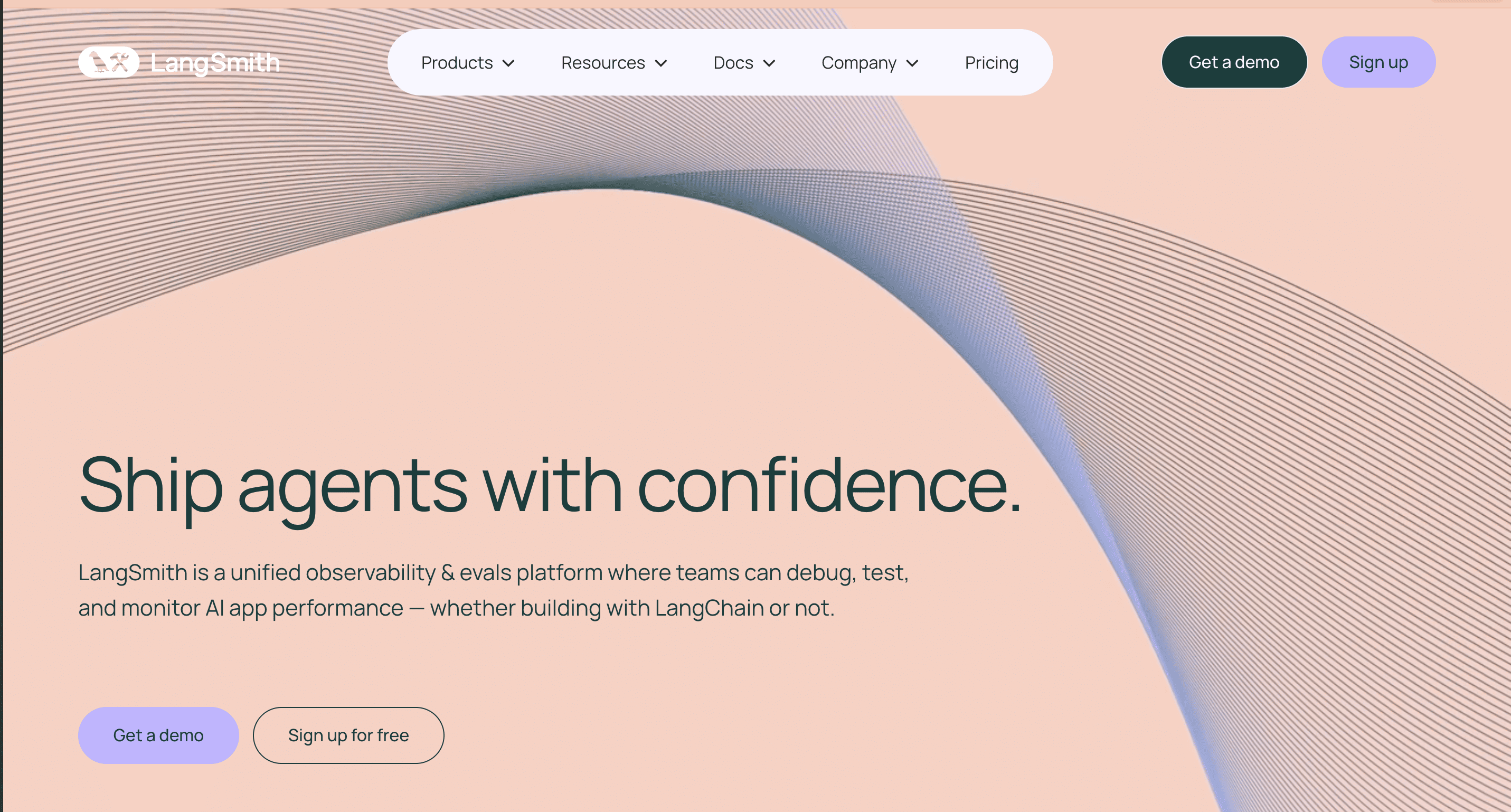
Platform overview
LangSmith (from LangChain) offers a Prompt Playground, versioning via commits and tags, and programmatic management. It’s well suited for teams embedded in the LangChain ecosystem needing multi‑provider configuration, tool testing, and multimodal prompts.
Key Features:
- Prompt Versioning and Monitoring: Langsmith allows users to make different versions of prompt and track their performance.
- Integration with Langchain: It is directly integrated to Langchain
- Manage prompts programmatically: Langsmith helps in evaluating the prompts to assess their performance.
- Cost Tracking: It helps in tracking the cost of LLM Applications to understand their usage and how can it be optimized
Pros
- Deep integration with LangChain runtimes and SDKs.
- Ens-to-Ens solution: from experimentation to evaluation
- Multimodal prompt support and model configuration management.
Cons
- Limited to Langchain- limited to Langchain framework.
- Scalability: may work out for small teams over large organizations.
5) Portkey
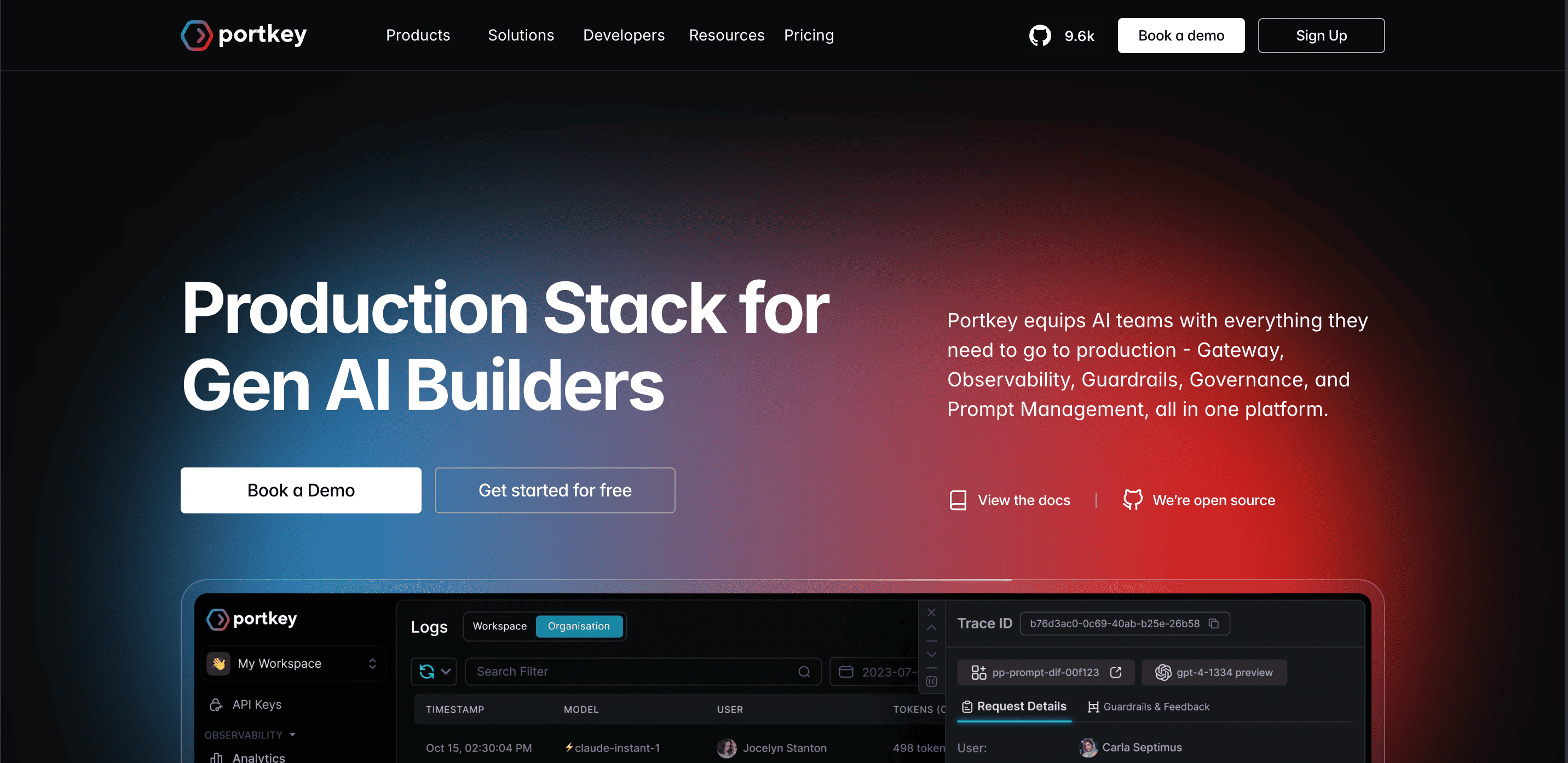
Platform overview
Portkey offers a Prompt Engineering Studio with a multimodal playground, versioning & labels, Prompt API, and observability. It complements its AI Gateway and governance features for production deployments across 1600+ models.
Key Features:
- Prompt Playground and templates: Experimentation with prompts and side‑by‑side comparisons, and multimodality.
- Prompt Versioning: try and test different prompt variations and revert to previous versions when needed
- Prompt Library for collaboration: central repository for managing, organizing, and collaborating on prompts across your organization
- Prompt Observability with analytics and logs: This feature allows you to track usage, monitor performance metrics, and analyze trends to continuously improve your prompts based on real-world usage.
Pros
- Version labels for production/staging/development and comparison workflows.
- Broad model catalog and gateway integrations for routing and governance.
Cons
- advanced built‑in tool orchestration may need third‑party components.
- Enterprise governance features depend on broader platform setup and gateway configuration.
Conclusion: How Maxim Stands Out
Maxim provides a full‑stack approach that goes beyond prompt versioning to cover experimentation, simulation, llm evaluation, and production‑grade ai observability. Teams can:
- Iterate quickly in the Prompt Playground with versioning, sessions, tool accuracy checks, and RAG retrieval evaluation (Prompt Playground, Prompt Retrieval Testing, Prompt Tool Calls).
- Quantify quality using off‑the‑shelf and custom evaluators, plus human annotation (Human Annotation).
- Automate testing in CI/CD and deploy via rules without code changes (Prompt CI/CD Integration, Prompt Deployment).
- Monitor in production with distributed tracing and real‑time alerts (Tracing Overview, Set Up Alerts and Notifications).
- Use the Bifrost gateway for unified multi‑provider access, failover, caching, and governance with OpenAI‑compatible APIs and drop‑in replacements (Bifrost docs).
For AI teams that need speed, quality, and reliability across the entire lifecycle, Maxim delivers an integrated path from prompt iteration to agent observability, reducing operational risk while accelerating shipping.
Request a demo: Maxim Demo or start free: Sign up
Further Reading and Resources:
- A Practitioner’s Guide to Prompt Engineering in 2025
- Version Control for Prompts: The Foundation of Reliable AI Workflows
- Prompt Management for AI Applications: Versioning, Testing, and Deployment with Maxim AI
FAQs
What is prompt versioning in AI applications?
Prompt versioning records changes to prompt templates, enabling audit trails, environment targeting, and safe rollouts. It supports prompt management, regression prevention, A/B tests, and collaboration across engineering and product teams. See Prompt Versions and Prompt Deployment.
How do I A/B test prompts in production?
Use deployment variables/labels or dynamic release rules to split traffic between versions. Maxim supports conditional deployments via variables (Prompt Deployment), and CI/CD pipelines to automate evals (Prompt CI/CD Integration). PromptLayer and Portkey provide label‑based traffic control (A/B Testing, Prompt Versioning & Labels).
How can I evaluate prompt changes safely?
Run bulk tests against datasets with evaluators (bias, toxicity, clarity, faithfulness) using Maxim’s Prompt Evals (Prompt Evals). For RAG use‑cases, include context evaluators (precision/recall/relevance) (Prompt Retrieval Testing).
How do I connect prompts to RAG pipelines?
Attach a Context Source to prompts and evaluate retrieved chunks using Maxim’s playground and tests (Prompt Retrieval Testing). This surfaces recall/precision/relevance to spot retrieval regressions quickly.
How does observability tie into prompt versioning?
Observability tracks latency, token usage, cost, and quality violations in production, linking back to prompt versions. Maxim’s tracing and alerts provide ai monitoring across repositories and rules (Tracing Overview, Set Up Alerts and Notifications).
Can I manage prompts programmatically?
Yes. Maxim’s SDK supports querying prompts by environment, tags, and folders (Prompt Management). LangSmith and PromptLayer provide SDKs to push/pull prompts and apply tags/webhooks (Manage prompts programmatically, Quickstart).
Ready to version, evaluate, and deploy prompts with confidence?
